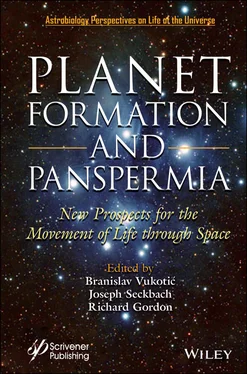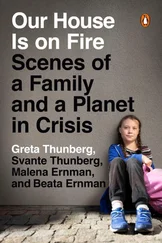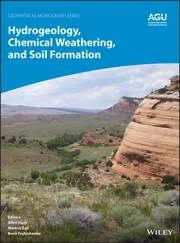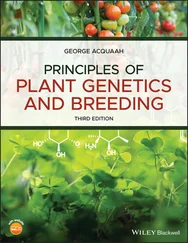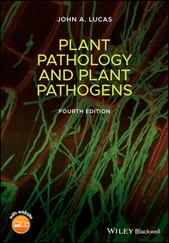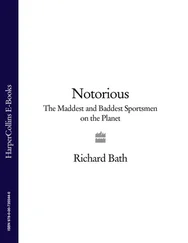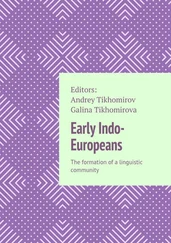Planet Formation and Panspermia
Здесь есть возможность читать онлайн «Planet Formation and Panspermia» — ознакомительный отрывок электронной книги совершенно бесплатно, а после прочтения отрывка купить полную версию. В некоторых случаях можно слушать аудио, скачать через торрент в формате fb2 и присутствует краткое содержание. Жанр: unrecognised, на английском языке. Описание произведения, (предисловие) а так же отзывы посетителей доступны на портале библиотеки ЛибКат.
- Название:Planet Formation and Panspermia
- Автор:
- Жанр:
- Год:неизвестен
- ISBN:нет данных
- Рейтинг книги:3 / 5. Голосов: 1
-
Избранное:Добавить в избранное
- Отзывы:
-
Ваша оценка:
- 60
- 1
- 2
- 3
- 4
- 5
Planet Formation and Panspermia: краткое содержание, описание и аннотация
Предлагаем к чтению аннотацию, описание, краткое содержание или предисловие (зависит от того, что написал сам автор книги «Planet Formation and Panspermia»). Если вы не нашли необходимую информацию о книге — напишите в комментариях, мы постараемся отыскать её.
Audience
Planet Formation and Panspermia — читать онлайн ознакомительный отрывок
Ниже представлен текст книги, разбитый по страницам. Система сохранения места последней прочитанной страницы, позволяет с удобством читать онлайн бесплатно книгу «Planet Formation and Panspermia», без необходимости каждый раз заново искать на чём Вы остановились. Поставьте закладку, и сможете в любой момент перейти на страницу, на которой закончили чтение.
Интервал:
Закладка:
[2.13] Ginsburg, I., Lingam, M., Loeb, A., Galactic Panspermia. Astrophys . J ., 868, 1, L12, 2018.
[2.14] Gonzalez, G., Brownlee, D., Ward, P., The Galactic Habitable Zone: Galactic Chemical Evolution. Icarus , 152, 185–200, 2001.
[2.15] Gowanlock, M.G., Patton, D.R., McConnell, S.M., A model of habitability within the Milky Way galaxy. Astrobiology , 11, 855–873, 2011.
[2.16] Gowanlock, M.G. and Morrison, I.S., The Habitability of Our Evolving Galaxy, in: Habitability of the Universe Before Earth , R. Gordon and A.A. Sharov (Eds.), 2018, series: Astrobiology: Exploring Life on Earth and Beyond , P. H. Rampelotto, J. Seckbach, R. Gordon (Eds.), Elsevier B.V., Amsterdam, 149.
[2.17] Grenfell, J.L., A review of exoplanetary biosignatures. Phys. Rep ., 713, 1–17, 2017.
[2.18] Horneck, G., Stöffler, D., Ott, S., Hornemann, U., Cockell, C.S., Moeller, R., Meyer, C., de Vera, J.-P., Fritz, J., Schade, S., Artemieva, N.A., Microbial rock inhabitants survive hypervelocity impacts on mars-like host planets: First phase of lithopanspermia experimentally tested. Astrobiology , 8, 1, 17–44, 2008.
[2.19] Horneck, G., Klaus, D.M., Mancinelli, R.L., Space Microbiology, Microbiology and Molecular Biology Reviews. Am. Soc. Microbiol ., 74, 1, 121–156, 2010.
[2.20] Krijt, S., Bowling, T.J., Lyons, R.J., Ciesla, F.J., Fast Litho-panspermia in the Habitable Zone of the TRAPPIST-1 System. Astrophys. J ., 839, 2, #L21, 2017.
[2.21] Lin, H.W. and Loeb, A., Statistical signatures of panspermia in exoplanet surveys. Astrophys. J. Lett ., 810, 1, #L3, 2015.
[2.22] Lineweaver, C.H., Fenner, Y., Gibson, B.K., The Galactic Habitable Zone and the Age Distribution of Complex Life in the Milky Way. Science , 303, 5654, 59–62, 2004.
[2.23] Lingam, M. and Loeb, A., Enhanced interplanetary panspermia in the TRAPPIST-1 system. Proc. Natl. Acad. Sci. U.S.A ., 114, 26, 6689–6693, 2017.
[2.24] Lingam, M. and Loeb, A., Implications of Captured Interstellar Objects for Panspermia and Extraterrestrial Life. Astron. J ., 156, 5, 193, 2018.
[2.25] Lingam, M., Ginsburg, I., Bialy, S., Active Galactic Nuclei: Boon or Bane for Biota? Astrophys. J ., 877, 1, 62, 2019.
[2.26] Madhusudhan, N., Exoplanetary Atmospheres: Key Insights, Challenges, and Prospects. Annu. Rev. Astron. Astrophys ., 57, 617, 2019.
[2.27] Meech, K.J., Weryk, R., Micheli, M., Kleyna, J.T., Hainaut, O.R., Jedicke, R., Wainscoat, R.J., Chambers, K.C., Keane, J.V., Petric, A., Denneau, L., Magnier, E., Berger, T., Huber, M.E., Flewelling, H., Waters, C., SchunovaLilly, E., Chastel, S., A brief visit from a red and extremely elongated interstellar asteroid. Nature , 552, 7685, 378–381, 2017.
[2.28] Melosh, H.J., The rocky road to panspermia. Nature , 332, 687–688, 1988.
[2.29] Melosh, H.J., Exchange of meteorites (and life?) between stellar systems. Astrobiology , 3, 1, 207–215, 2003.
[2.30] Mileikowsky, C., Cucinotta, F.A., Wilson, J.W., Gladman, B., Horneck, G., Lindegren, L., Melosh, J., Rickman, H., Valtonen, M., Zheng, J.Q., Natural Transfer of Viable Microbes in Space: 1. From Mars to Earth and Earth to Mars. Icarus , 145, 2, 391–427, 2000.
[2.31] Morrison, I.S. and Gowanlock, M.G., Extending Galactic Habitable Zone Modeling to Include the Emergence of Intelligent Life. Astrobiology , 15, 8, 683–696, 2015.
[2.32] Nyquist, L.E., Bogard, D.D., Shih, C.-Y., Greshake, A., Stöffler, D., Eugster, O., Ages and Geologic Histories of Martian Meteorites. Space Sci. Rev ., 96, 105–164, 2001.
[2.33] Onofri, S., de la Torre, R., de Vera, J.-P., Ott, S., Zucconi, L., Selbmann, L., Scalzi, G., Venkateswaran, K.J., Rabbow, E., Sánchez, I., Francisco, J., Horneck, G., Survival of rock-colonizing organisms after 1.5 years in outer space. Astrobiology , 12, 5, 508–516, 2012.
[2.34] Owen, J.E., Atmospheric Escape and the Evolution of Close-in Exoplanets. Annu. Rev. Earth Planet. Sci ., 47, 1, 67–90, 2019.
[2.35] Pacetti, E., Balbi, A., Lingam, M., Tombesi, F., Perlman, E., The Impact of Tidal Disruption Events on Galactic Habitability. Mon. Notices R. Astron. Soc ., 498, 3, 3153–3157, 2020.
[2.36] Prantzos, N., On the “galactic habitable zone”. Space Sci. Rev ., 135, 313–322, 2008.
[2.37] Savino, A., Koch, Z., Prudil, A., Kunder, A., Smolec, R., The Age of the Milky Way Inner Stellar Spheroid from RR Lyrae Population Synthesis. Astron. Astrophys ., 641, A96, 2020.
[2.38] Seager, S., The future of spectroscopic life detection on exoplanets. Proc . Natl. Acad. Sci. U.S.A ., 111, 35, 12634–12640, 2014.
[2.39] Siraj, A. and Loeb, A., Transfer of Life Between Earth and Venus with Planet-Grazing Asteroids. ArXiv:2009.09512, 2020, https://arxiv.org/pdf/2009.09512.pdf.
[2.40] Tsujimoto, T. and Baba, J., Remarkable Migration of the Solar System from the Innermost Galactic Disk; a Wander, a Wobble, and a Climate Catastrophe on the Earth. Astrophys. J ., 904, 2, #137, 2020.
[2.41] Vukotić, B., Steinhauser, D., Martinez-Aviles, G., Ćirković, M.M., Micic, M., Schindler, S., “Grandeur in this view of life”: N-body simulation models of the Galactic habitable zone. Mon. Notices R. Astron. Soc ., 459, 3512–3524, 2016.
[2.42] Wallis, M.K. and Wickramasinghe, N.C., Interstellar transfer of planetary microbiota. Mon. Notices R. Astron. Soc ., 348, 1, 52–61, 2004.
[2.43] Wesson, P.S., Panspermia, Past and Present: Astrophysical and Biophysical Conditions for the Dissemination of Life in Space. Space Sci. Rev ., 156, 1–4, 239–252, 2010.
[2.44] Zhu, W., Udalski, A., Novati, S.C., Chung, S.-J., Jung, Y.K., Ryu, Y.-H., Shin, I.-G., Gould, A., Lee, C.-U., Albrow, M.D., Yee, J.C., Han, C., Hwang, K.-H., Cha, S.-M., Kim, D.-J., Kim, H.-W., Kim, S.-L., Kim, Y.-H., Lee, Y., Park, B.-G., Pogge, R.W., KMTNet Collaboration, Poleski, R., Mróz, P., Pietrukowicz, P., Skowron, J., Szymański, M.K., KozLowski, Ulaczyk, K., Pawlak, M., OGLE Collaboration, Beichman, C., Bryden, G., Carey, S., Fausnaugh, M., Gaudi, B.S., Henderson, C.B., Shvartzvald, Y., Wibking, B., Spitzer Team, Toward a Galactic Distribution of Planets. I. Methodology and Planet Sensitivities of the 2015 High-cadence Spitzer Microlens Sample. Astron. J ., 154, 5, #210, 2017.
[2.45] Zubrin, R., Interstellar panspermia reconsidered. J. Br. Interplanet. Soc ., 54, 7–8, 262–269, 2001.
[2.46] Zubrin, R., Exchange of material between solar systems by random stellar encounters. Int. J. Astrobiology , 19, 1, 43–48, 2019.
Email : balbi@roma2.infn.it
3
The Extended Continuity Thesis, Chronocentrism, and Directed Panspermia
Milan M. Ćirković
Astronomical Observatory of Belgrade, Belgrade, Serbia
Abstract
The continuity thesis as formulated by Iris Fry has a strong appeal not only in the origin of life studies, but as a unifying principle bridging the gap between physical and life sciences. It is one of the most powerful methodological tools of contemporary astrobiology, especially in its efforts to build a synthetic view of the place of life and intelligence in the widest, cosmological context. Here, I briefly survey several of its key aspects and identify several open problems that it might be able to help with. Two particularly interesting aspects of the continuity thesis not discussed so far are its relation to the chronocentric bias and the application to panspermia hypotheses, especially the theory and practice of directed panspermia.
Читать дальшеИнтервал:
Закладка:
Похожие книги на «Planet Formation and Panspermia»
Представляем Вашему вниманию похожие книги на «Planet Formation and Panspermia» списком для выбора. Мы отобрали схожую по названию и смыслу литературу в надежде предоставить читателям больше вариантов отыскать новые, интересные, ещё непрочитанные произведения.
Обсуждение, отзывы о книге «Planet Formation and Panspermia» и просто собственные мнения читателей. Оставьте ваши комментарии, напишите, что Вы думаете о произведении, его смысле или главных героях. Укажите что конкретно понравилось, а что нет, и почему Вы так считаете.
